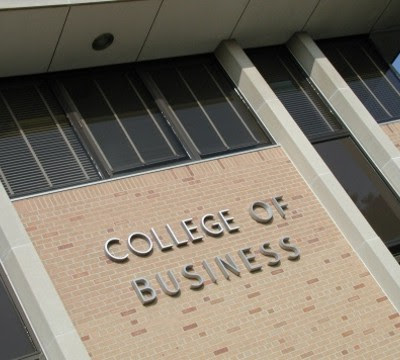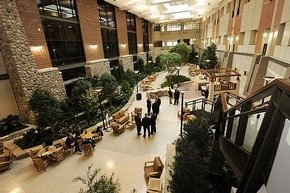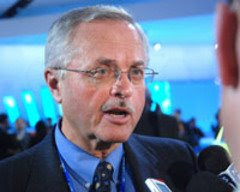 DETROIT – After months of living on government loans, Chrysler finally succumbed to bankruptcy Thursday, pinning its future on a top-to-bottom reorganization and plans to build cleaner cars through an alliance with Italian automaker Fiat.
DETROIT – After months of living on government loans, Chrysler finally succumbed to bankruptcy Thursday, pinning its future on a top-to-bottom reorganization and plans to build cleaner cars through an alliance with Italian automaker Fiat.
The nation's third-largest car manufacturer filed for Chapter 11 bankruptcy protection in New York after a group of creditors defied government pressure to wipe out Chrysler's debt. The company plans to emerge in as little as 30 days as a leaner, more nimble company, with Fiat potentially becoming the majority owner in the future. In return, the federal government agreed to give Chrysler up to $8 billion in additional aid and to back its warranties.
"It's a partnership that will give Chrysler a chance not only to survive, but to thrive in a global auto industry," President Barack Obama said from the White House.
Chrysler said it will close all its plants starting Monday and they will stay closed until the company comes out of bankruptcy. At least three Detroit-area factories sent workers home Thursday after suppliers stopped shipping parts over fears they would not be paid.
CEO Robert Nardelli announced he would step down when the bankruptcy is complete and take a post as an adviser with Cerberus Capital Management LP, which will give up its 80 percent ownership of Chrysler under the automaker's plan. Vice Chairman Tom LaSorda, who once ran the company when it was owned by the German automaker Daimler, said he would retire.
"A lot of us are scared," said Steve Grabowski, 33, who has worked at a Warren, Mich., parts stamping plant for seven years and was sent home Thursday. "We knew something like this was going to happen, but we didn't think it would be so soon."
Chrysler's bankruptcy filing is the latest step in a drastic reordering of the American auto industry, which has been crushed by higher fuel prices, the recession and customer tastes that are moving away from the gas-guzzling SUVs that were once big money makers.
Lee Iacocca, the retired chairman and CEO who led Chrysler through a government bailout in the late 1970s, said it was a sad day.
"It pains me to see my old company, which has meant so much to America, on the ropes," he said in a written statement. "But Chrysler has been in trouble before, and we got through it, and I believe they can do it again."
The government has sunk about $25 billion in aid into Chrysler and rival General Motors Corp.
GM faces its own day of reckoning on June 1, a date the administration has set for it to come up with its own restructuring plan. GM has announced thousands of job cuts, plans to idle factories for weeks this summer and has even offered the federal government a majority stake in the company as it races to meet the deadline.
Like at Chrysler, debt may be the stumbling block. GM has asked its unsecured bondholders to exchange $27 billion of debt for a 10 percent stake in the automaker. The creditors balked, saying that would leave them with just pennies on the dollar and they deserve a majority stake if they give up their claims.
When Chrysler emerges from bankruptcy, the United Auto Workers union will own 55 percent of the automaker and the U.S. government will own 8 percent. The Canadian and Ontario governments, which are also contributing financing, would share a 2 percent stake.
Under the deal, Chrysler would gain access to Fiat's expertise in small, fuel-efficient vehicles. The U.S. automaker eventually wants to build cars that could get up to 40 mpg, far more economical than its current fleet focused on minivans, Jeep SUVs and the Dodge Ram pickup.
In exchange, Fiat would initially get 20 percent of the company, but its share could rise to 35 percent if certain benchmarks are met, and Fiat said Thursday it could get an additional 16 percent by 2016 if Chrysler's U.S. government loans are fully repaid. Fiat would also get access to the North American market through Chrysler factories and dealerships.
Fiat CEO Sergio Marchionne said he planned to spend time meeting Chrysler employees and touring its plants over the next few weeks.
He said Fiat was preparing for Chrysler to "re-emerge quickly as a reliable and competitive automaker." Fiat also plans to reintroduce brands like Alfa Romeo in North American markets.
First, though, bankruptcy court Judge Arthur Gonzalez will have to sort out the issue of Chrysler's creditors, who hold $6.9 billion of the company's debt. The company's first hearing is set for Friday.
The Treasury Department's auto task force had been racing for the past week to clear the hurdles that led the government to reject Chrysler's initial survival plan one month ago. Along with the Fiat deal, Chrysler adopted a cost-cutting pact with the UAW on Wednesday.
Four of the largest banks holding 70 percent of Chrysler's debt agreed this week to a deal that would give them $2 billion. But a collection of hedge funds refused to budge, saying the deal was unfair and would only return a small fraction of their holdings.
When the hedge funds refused a sweetened offer Wednesday, Chrysler and the government resorted to bankruptcy.
Obama chastised the funds for seeking an "unjustified taxpayer-funded bailout."
One lender, OppenheimerFunds Inc., said it rejected the government offer because it "unfairly asked our fund shareholders to make financial sacrifices greater than the sacrifices being made by unsecured creditors."
Later Thursday, one of the hedge funds that had been a holdout issued a statement agreeing to the offer.
"We believe that this is in the best interests of all Chrysler stakeholders, and our own investors and partners," said the statement from Perella Weinberg Partners. The fund said it was working "to encourage broad participation in the settlement."
The White House said Chrysler could comes out of "surgical" bankruptcy in 30 to 60 days. Under normal circumstances, it would be difficult to complete such a large bankruptcy so quickly.
But John Pottow, a University of Michigan professor who specializes in bankruptcy, said the government's level of involvement is much greater than a typical corporate bankruptcy.
"If you have the president of the United States who wants something to happen, I think anything's possible in bankruptcy protection," he said.
The Fiat deal and bankruptcy cap a disastrous time for Chrysler.
The Auburn Hills, Mich.-based company lost $8 billion last year and its sales through March were down 46 percent compared with the same period last year, leading some auto industry analysts to question whether Chrysler can survive even in bankruptcy.
But company executives told reporters Thursday that Chrysler vehicles with Fiat's fuel-efficient technology should reach showrooms in 18 months.
Vice Chairman Jim Press said Chrysler has cut expenses to operate profitably at a lower sales volume, and he said it would be able to take advantage of Fiat's distribution network to sell more vehicles globally.
Also, the company has new products coming out such as the new Jeep Grand Cherokee, which debuts in early 2011.
Press said the company predicts that small-car sales will rise dramatically around the time the Fiat products hit the U.S. market.
"The real volume pickup opportunity for smaller cars is going to start to ramp up about two years from now," he said.
Despite the turmoil with Chrysler and GM's looming deadline, Obama urged consumers to keep buying cars.
"If you are considering buying a car, I hope it will be an American car," he said.


















